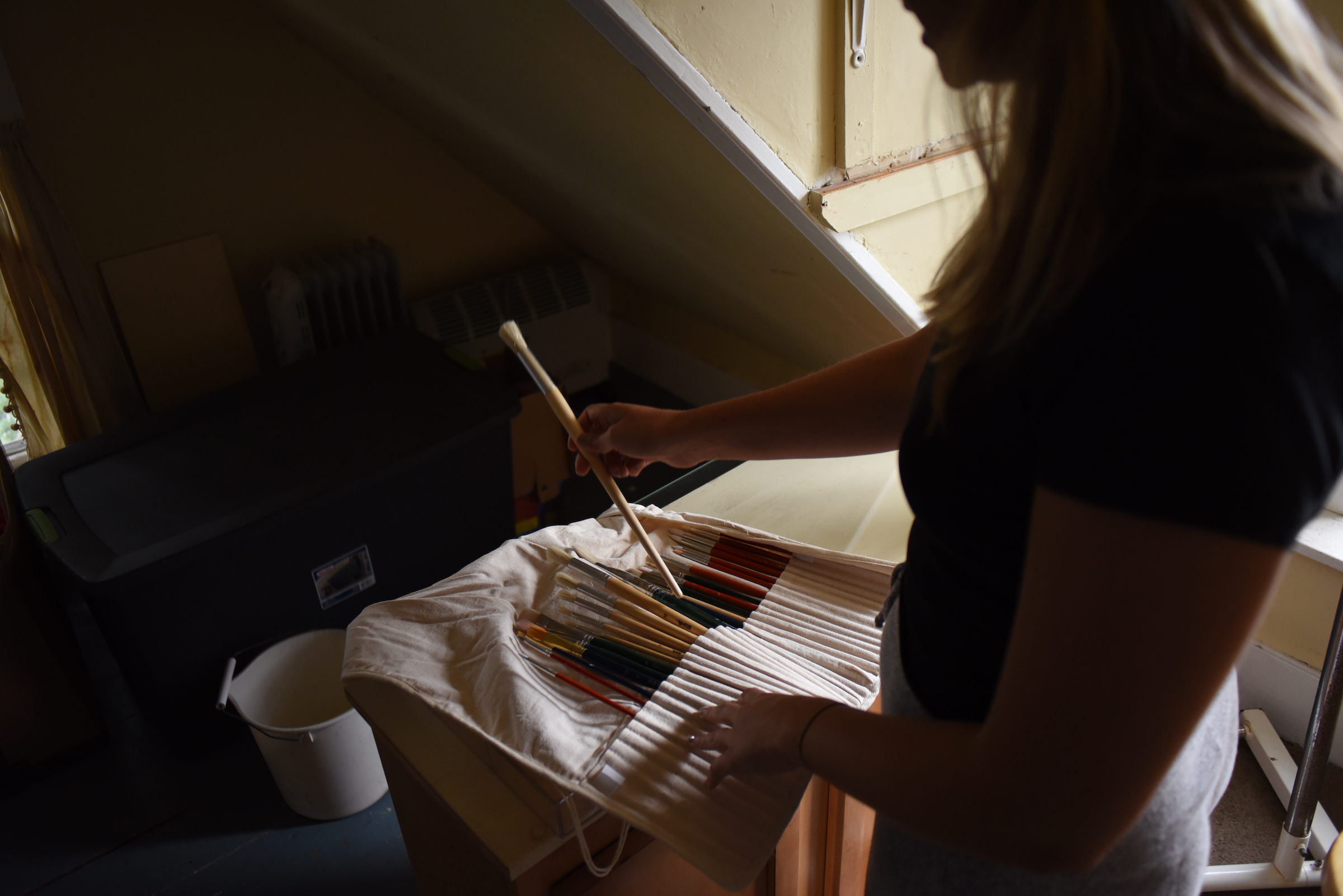Visual and performing arts adapt for remote learning
September 4, 2020
 Mackey O'Keefe
Mackey O'KeefeThis semester, without the ability to gather in the studio or rehearse on stage, faculty in the visual and performing arts have had to come up with creative approaches to remote instruction and artistic community-building. Despite these challenges, students have begun the semester with great enthusiasm, filling introductory courses and, in some cases, becoming part of long waitlists.
Carrie Scanga, chair of the department of art, director of visual arts division and associate professor of art, explained that courses in the visual arts will provide a unique, hands-on learning experience that is especially rare and rewarding during a remote semester.
“I feel like in this Zoom environment … the body gets left behind,” said Scanga in a phone interview with the Orient. “More than ever, we need these experiences that help us articulate embodied ways of knowing the world.”
Scanga believes that, despite the distance, Bowdoin art professors will still take a highly personalized approach to instruction, a key factor that draws many to the discipline and creates a strong interpersonal bond between students and faculty. For example, the department has hired teaching assistants who will hold virtual office hours to share work, give advice and promote intra-departmental bonding. Some classes will even host calls in the mornings during which students can drink coffee and paint together.
“Outside of our course material, we are trying to replicate the inner cross-pollination that happens between students,” Scanga said.
“The way I teach in the classroom, I’m in a relationship with the students,” she added. “I want to feel their vision.”
“Along with other printmaking professors around the country, we’re going to take students on ‘Ask Me Anything’ tours of studios and home lives so students can see what it looks like—how does an artist who runs a community print shop live? Who’s in their orbit? How does an artist who runs the radical trans printmaking community [work]? How does that collective operate?” said Scanga.
To facilitate their effort, the visual arts department will also use a productivity software called Padlet with which students can seamlessly share their work for in-class critiques and build professional portfolios. Scanga hopes that students will learn how to share their work—a crucial skill for graphic designers, photographers and artists who make public commissions.
Despite its efforts to foster an immersive and educational environment, the department also recognizes that some classes and experiences cannot be replicated remotely and has adjusted their class offerings accordingly. All the mediums and materials are designed to be more conducive to remote learning and more accessible for students at home. Instead of darkroom photography, this semester, Michael Kolster, professor of art, is teaching a course on digital photography. Similarly, the department is adjusting printmaking courses that use an etching facility to using woodcut—a different printmaking method that can be done at home.
The theater and dance department has also adapted its curriculum to online learning by emphasizing the holistic values necessary to work in the performing arts.
“Theater and dance, both at Bowdoin and in the broader professional fields, have high-reaching values like fostering inclusivity, collaboration, public risk-taking and embodying ideas and experience toward multi-dimensional learning and understanding,” said Abigail Killeen, chair of department of theater and dance and associate professor of theater. “We are excited about connecting these values, since they feel particularly relevant this semester.”
Although the theater and dance department will not put on performances in the fall, the faculty hope to host some in the spring. Killeen encourages students to stay tuned for auditions and more information on performances as the fall semester progresses.

Comments
Before submitting a comment, please review our comment policy. Some key points from the policy: